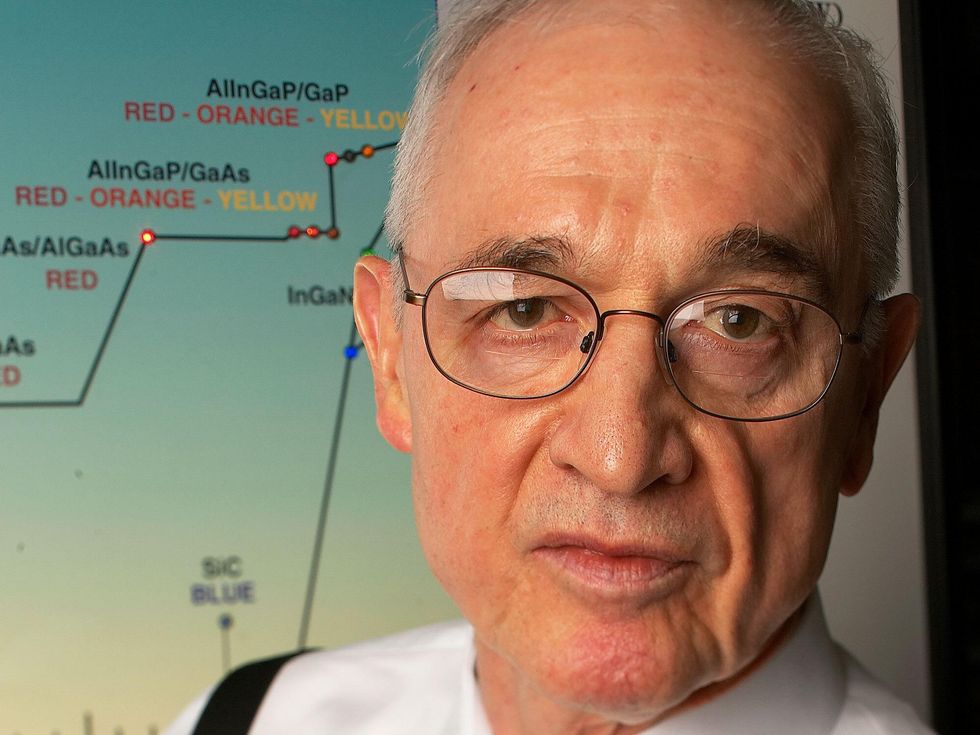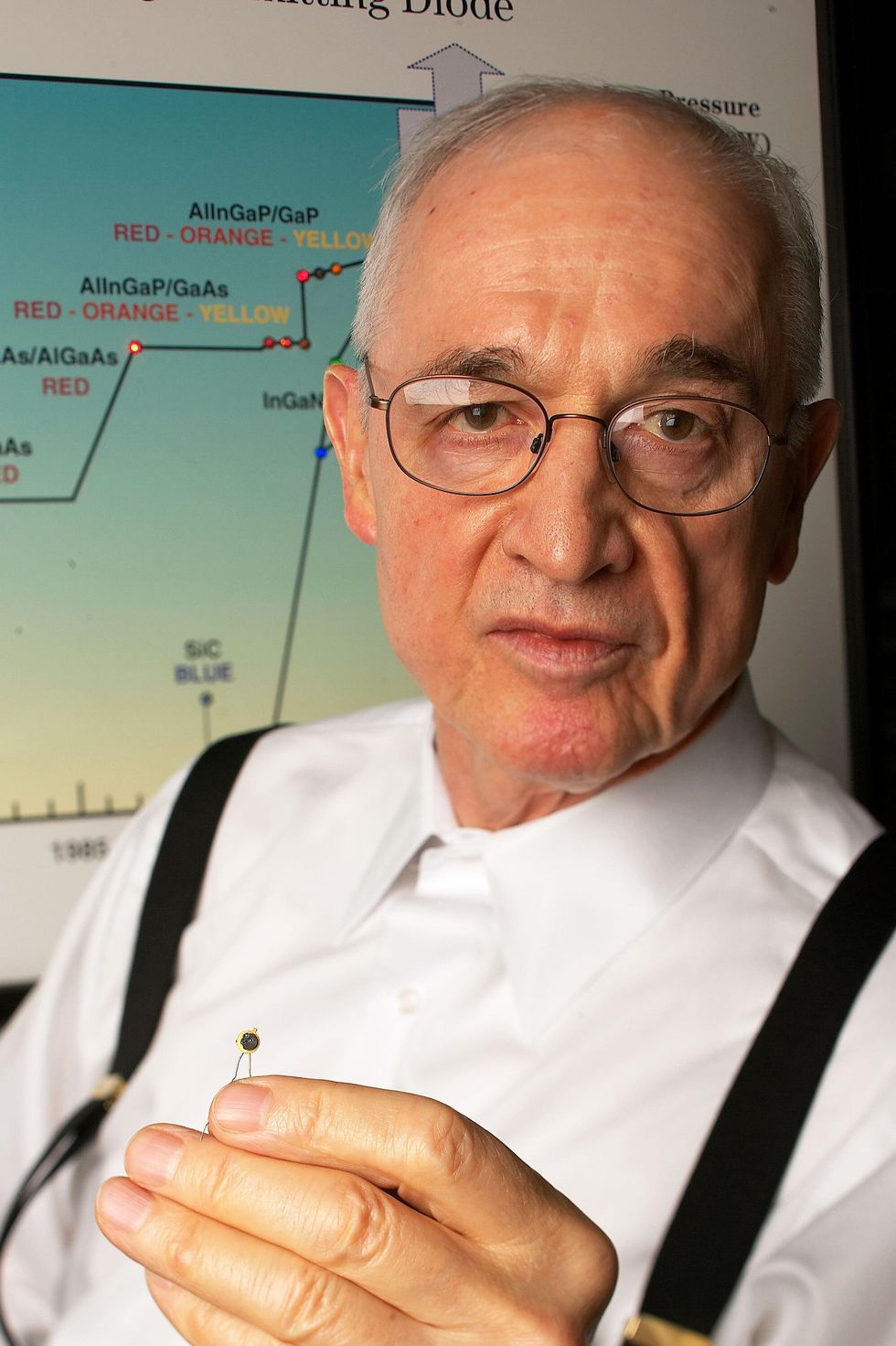

Nick Holonyak, Jr. retains a portion of a stoplight that utilizes a newer LED created by his learners. Ralf-Finn Hestoft/Getty Pictures
Nick Holonyak Jr., a prolific inventor and longtime professor of electrical engineering and computing, died on 17 September at the age of 93. In 1962, even though doing work as a consulting scientist at Basic Electric’s State-of-the-art Semiconductor Laboratory, he invented the initial functional noticeable-spectrum LED. It is now employed in light bulbs and lasers.
Holonyak still left GE in 1963 to grow to be a professor of electrical and pc engineering and researcher at his alma mater, the College of Illinois Urbana-Champaign. He retired from the college in 2013.
He gained the 2003 IEEE Medal of Honor for “a job of revolutionary contributions to semiconductors, such as the progress of semiconductor alloys and heterojunctions, and to obvious light-weight-emitting diodes and injection lasers.”
LED and other semiconductor industry breakthroughs
After Holonyak attained bachelor’s, master’s, and doctoral levels in electrical engineering from the College of Illinois, he was employed in 1954 as a researcher at Bell Labs, in Murray Hill, N.J. There he investigated silicon-based digital products.
He remaining in 1955 to serve in the U.S. Military Sign Corps, and was stationed at Fort Monmouth, N.J., and Yokohama, Japan. Right after staying discharged in 1957, he joined GE’s Highly developed Semiconductor Laboratory, in Syracuse, N.Y.
Whilst at the lab, he invented a shorted emitter thyristor machine. The four-layered semiconductor is now located in gentle dimmers and ability tools. In 1962 he invented the red-light semiconductor laser, recognised as a laser diode, which now is located in cellphones as perfectly as CD and DVD players.
Later that calendar year, he demonstrated the 1st noticeable LED—a semiconductor resource that emits gentle when present-day flows via it. LEDs earlier had been designed of gallium arsenide. He established crystals of gallium arsenide phosphide to make LEDs that would emit noticeable, purple gentle. His get the job done led to the enhancement of the higher-brightness, substantial-performance white LEDs that are identified in a broad range of apps nowadays, which includes smartphones, televisions, headlights, traffic alerts, and aviation.
Revolutionary analysis at the University of Illinois
Holonyak left GE in 1963 and joined the College of Illinois as a professor of electrical and computer engineering.
In 1977 he and his doctoral college students shown the 1st quantum properly laser, which afterwards identified programs in fiber optics, CD and DVD players, and clinical diagnostic instruments.
The university named him an endowed-chair professor of electrical and computer system engineering and physics in 1993. The posture was named for John Bardeen, an honorary IEEE member who had obtained two Nobel Prizes in Physics as well as the 1971 IEEE Medal of Honor. Bardeen was Holonyak’s professor in graduate school. The two adult males collaborated on investigate jobs until Bardeen’s loss of life in 1991.
Alongside one another with IEEE Daily life Fellow Milton Feng, Holonyak led the university’s transistor laser research center, which was funded by the U.S. Defense Sophisticated Study Jobs Agency. There they formulated transistor lasers that experienced equally gentle and electric powered outputs. The innovation enabled high-pace communications systems.
Extra not too long ago, Holonyak developed a method to bend light-weight inside gallium arsenide chips, making it possible for them to transmit information and facts by mild relatively than electric power.
He supervised far more than 60 graduate college students, numerous of whom went on to develop into leaders in the electronics field.
Queen Elizabeth prize, Draper prize, and other awards
Holonyak acquired previous year’s Queen Elizabeth Prize for Engineering the National Academy of Engineering’s 2015 Draper Prize the 2005 Japan Prize and the 1989 IEEE Edison Medal. In 2008 he was inducted to the National Inventors Hall of Fame, in Akron, Ohio.
He was a fellow of the American Academy of Arts and Sciences, the American Physical Culture, and Optica. He was also a foreign member of the Russian Academy of Sciences. In addition Holonyak was a member of the U.S. Academies of Engineering and Sciences.
Examine the full tale about Holonyak’s LED breakthrough in IEEE Spectrum.

